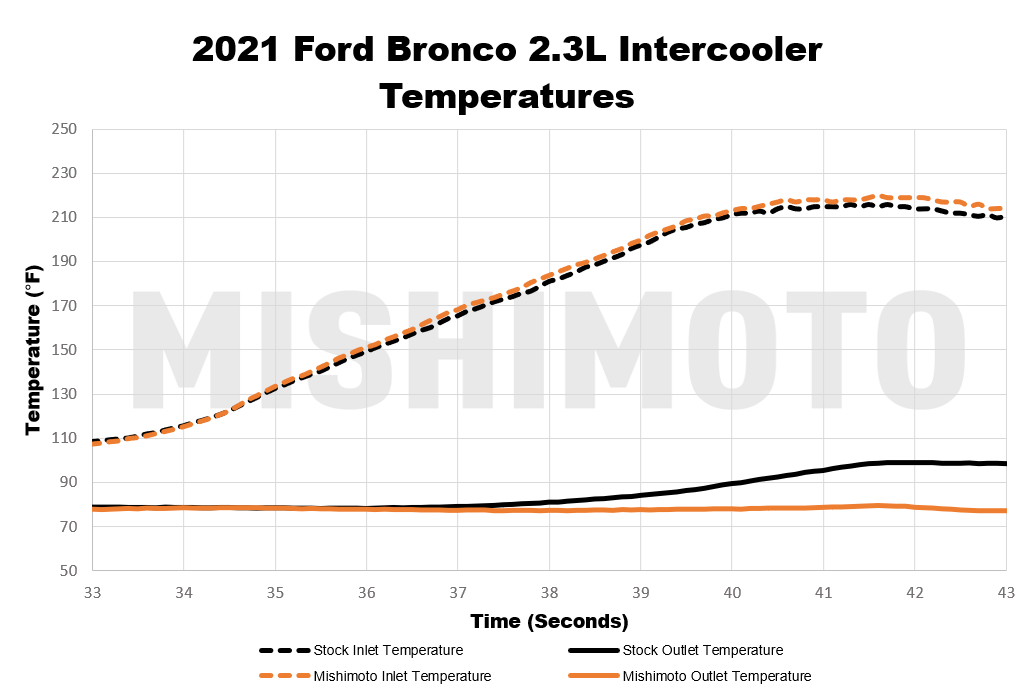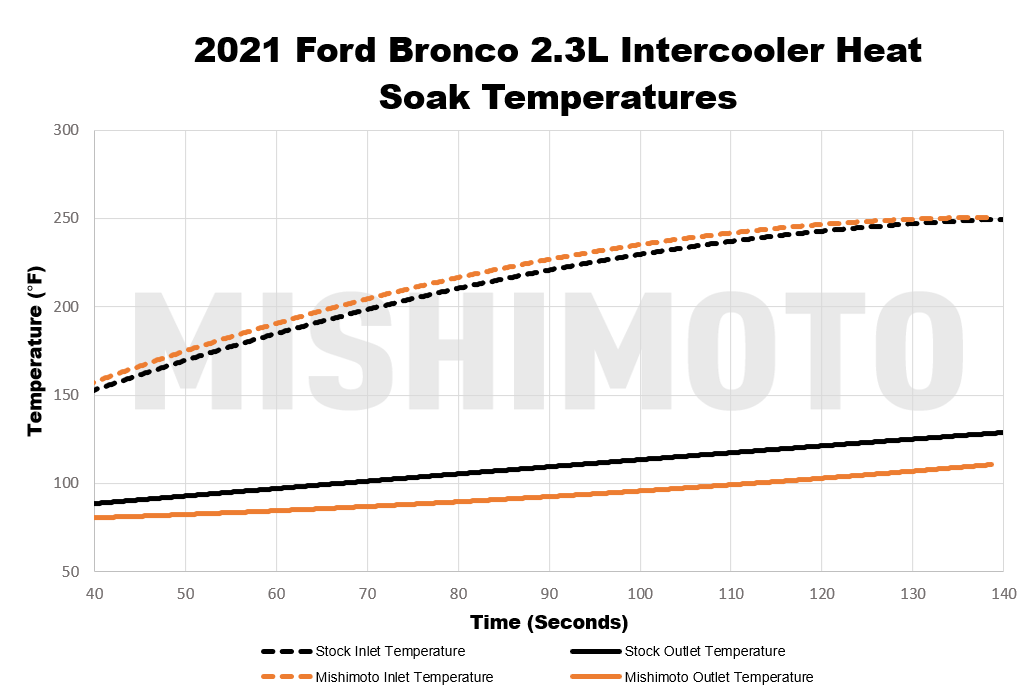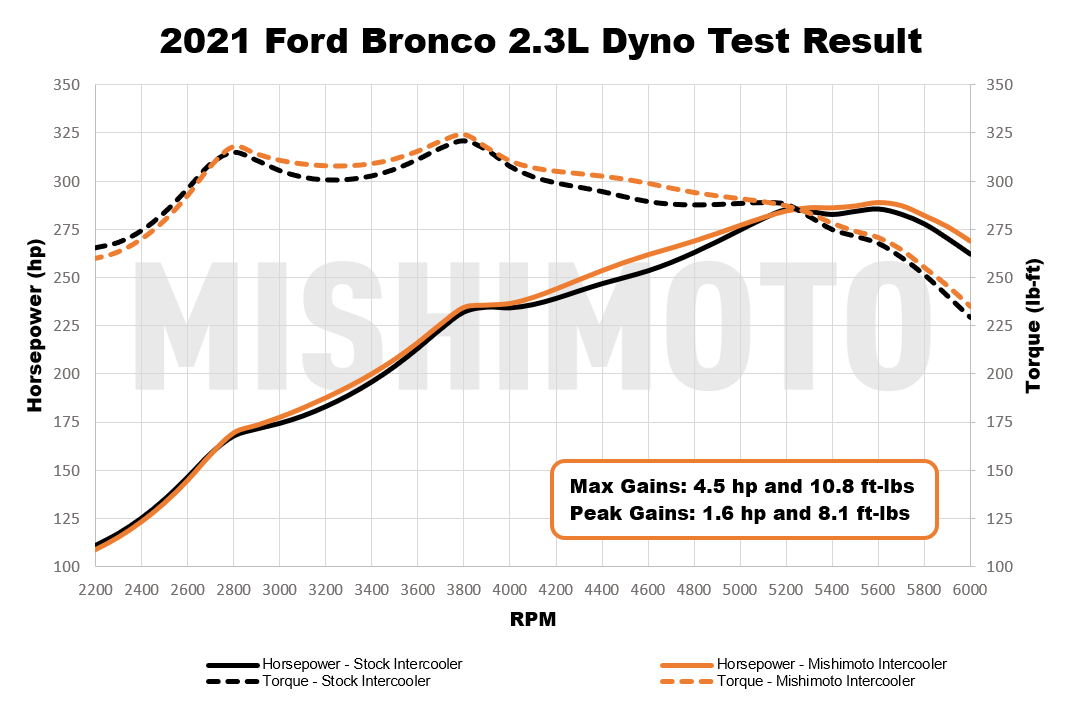
High Road – 2021+ Ford Bronco Performance Intercooler R&D, Part 6 – 2.3L Dyno Testing
The engineers at Ford developed their latest and greatest Bronco for the high road, but the intercooler used across the lineup wasn’t quite up to the task of wilderness exploration. Plus, we can think of plenty of better uses for the OEM intercooler’s mounting location. So we told the OEM intercooler to take a hike and took our new design to the high road. It’s been a long journey getting to the trailhead, but we’re finally ready to start our dyno journey with our plucky 2.3L-powered Pedro taking point.


Our trip to the dyno brings us to our DynaPack system since the 7-speed manual plays nice with this kit. Locked into its RWD drive configuration and ready for torture testing, we started with our single power pulls. These tests hone into the primary aspects of our design that we’re looking to compare. The first is the primary reason for upgrading your intercooler, heat dissipation. For this round of testing, we slot our Bronco into 4th gear, which is closest to a 1:1 gear ratio, and sweep the full rev range of that gear. Then, using our dyno fan to simulate road wind conditions, we log the difference in outlet temperatures through the rev range. This slice of heat dissipation gives us an indicator of how well the intercooler will perform on the road and trails. Specifically, when equipped to the stock-tuned 2.3L Bronco, we recorded a 21°F temperature drop in outlet temperatures over the OEM intercooler.


This test may give insight into how the intercooler performs in the real world, but we’ve also devised a test that simulates harsh driving conditions. We dubbed this test the heat soak test, and the idea is right in the name. The procedure is simple: we stack up to six back-to-back power pulls together with no cool-down period. The repeated heavy load on the vehicle provides a simulated driving condition that’s harsher than most real-world conditions, butting this intercooler through its toughest test yet. The 2.3L EcoBoost did get fired up, topping intercooler inlet temperatures at approximately 250°F. Still, with our performance design installed, we were able to reduce outlet temperatures by 20°F when compared to the OEM design.


Charged air cooling is an intercooler’s primary task, providing a solid base to build more power on any forced induction platform. Bolt-on power to a factory-tuned vehicle isn’t expected, but it’s often the beneficial side effect of improved flow and cooler air. Our design’s benefit to the system did just that, and we recorded max power gains of 4.5HP and 10.8TQ on our stock-tuned 2.3L Bronco.


The high road is rewarding but treacherous. With our latest intercooler design installed, these 2.3L-powered G.OA.T. machines can keep cool and even have a little extra grunt to make the journey even easier. Keep your eyes peeled for our presale launch coming soon, and of course, 2.3L is one of many on this journey, too. For those with the V6 option, make head over to our next post for the 2.7L’s trip to the dyno.
Thanks for Reading!
-Nick




